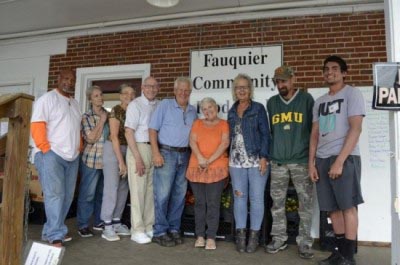
Making a Big Impact With Fauquier Community Food Bank
September 15, 2017 by 4P Foods
On a Friday morning, the 4P Foods DC office team drove an hour outside of city headquarters to Warrenton, VA. Warrenton is a short drive from the 4P FOODS distribution site. Each week, freights of food are shipped from regional farms to our warehouse in Culpeper, often with the same truck making several stops at the small family farm partners who supply our fresh food. Our truck continues twenty minutes further to the site of our main local food bank partner, Fauquier Community Food Bank and Thrift.
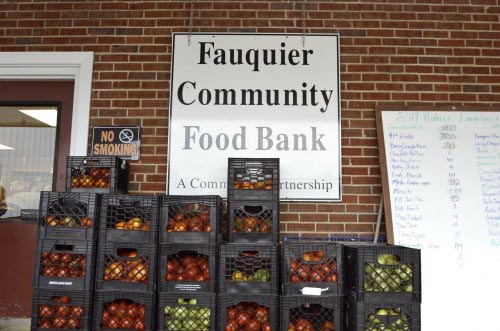
4P FOODS donates 10% of the food share inventory to the Fauquier Community Food Bank each week. So far this year, 4P Foods has donated 3,823 pounds of farm-fresh produce. Each day, the food pantry serves anywhere from 30 to 60 families. In the summer, 50% of the donations consist of produce. In the winter, this drops down to 25% of donations. As a food hub that is active year-round, we are able to give healthy food to the community through the winter months, a time when food access is scarce but the need for assistance is constant, if not in higher demand.
Food bank clients are a diverse mix of the local community. Largely, they serve the working poor (families with two working parents and children), seasonal workers, and the elderly facing high medical bills. The Executive Director, Sharon Ames, stresses that every client is unique and in a unique life situation. The organization values the worth and diversity of each person in need, and works with other service organizations to match clients with the proper care from government organizations. Clients are registered with the food bank, and have an access key that allows them to come daily for staples like bread and milk, and twice a month for a comprehensive donation of groceries.
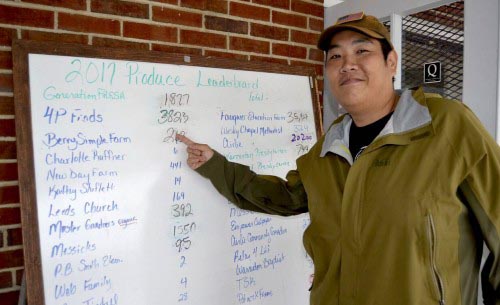
Unique to the Fauquier Food Bank is the individualized model of care. Clients line up on a ramp outside the pantry with a shopping cart, waiting to be called inside. Upon entry, each client checks in at the desk with a membership card, and is matched with a volunteer who then escorts the client on a shopping experience. Food donations are organized like a grocery store with rows of dry goods stacked among categorized shelves, and fresh produce and meat and dairy on the outskirts. Shelves are labeled by notecards with a number one or two, signifying how many food items from that section may be given to each household.
Food bank clients can come daily for bread and produce and twice a month for a full shop. This model of giving is unique for food pantries by providing a sense of agency to those in need. Also, by choosing their own items, the amount of food waste is decreased since what is not desired will stay on the shelf for the next person.
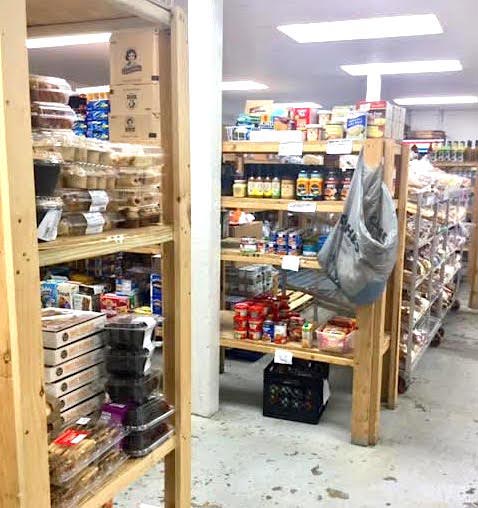
Our team joined the pantry shopping experience alongside seasoned volunteers. “Here we have chicken, beef, sausage. You can pick one from here. Do you like chicken or sausage? These patties look good too," offered Tom Baccei, a regular volunteer and President of the Board. Through my shopping experience with clients, I learned about people's favorite meals, family dynamics, and cooking tips, such as how to stretch one package of ground beef in multiple recipes. We pulled the cart alongside an abundance of seasonal produce in bins at the end of the last aisle.
On this day, poblano peppers and tomatoes were the bumper crop, alongside containers of eggplant, summer squash, acorn squash, bell peppers, corn, leeks, and potatoes. One client in particular was excited about the day's donation. She told me her family comes from Mexico and she loves poblanos. The volunteer nodded to her that she could take as many as she would use - there was more than enough, and these peppers were not favored by all clients, afterall. Her face lit up as she picked through handfuls into her basket while telling me how each one would get used: chilis rellenos (stuffed peppers with cheese), rice and beef, and soup.
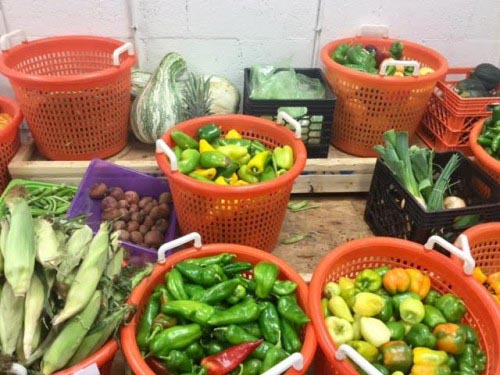
Since 2011, Sharon Ames has been the Executive Director of the non-profit food bank. Originally, the center existed under an umbrella of food banks supported by the local government. All five food banks were set to close that year. Sharon would not accept that the doors were to close on the needy. “Who will feed the families?” Sharon asked, as we sat and listened to the food bank origins before the volunteer shift began. Sharon and a small group of dedicated volunteers organized to learn how to apply for a 501c3, seek donations, and eventually were permitted to establish the Fauquier Community Food Bank and Thrift as its own parish.
During Sharon’s seven years as Executive Director of the non-profit, she has encouraged a dramatic shift in the type of donations accepted and distributed to the community. Years ago, donated beverages were mainly caloric, high fructose corn syrup elixirs like Pepsi and Kool-Aid. Sharon witnessed mothers giving young kids Kool-Aid instead of formula in baby bottles. The main type of foods were processed cakes, pastries, and white bread. Nutrition was a focal point for Sharon, whose priority was to cut back on processed food and provide access to healthy food to the community.

When the accessibility of more healthy food and produce occurred, some clients were not happy. At first, people avoided bins of summer sweet corn because they expected it to be the quality of leftovers from box stores, often old with bug-infested ears of corn. Some clients avoided bins of fresh tomatoes because they were accustomed to cooking only with canned sauces. To help encourage folks to choose fresh produce, the volunteers talk about cooking with patrons.
When the influx of fresh tomatoes from 4P Foods and neighboring farms is dropped off in the summer, Sharon made sure that all clients know how to make their own sauces and salsas with fresh tomatoes. Volunteers will see to it that clients pick-up recipe handouts at the front desk in order to cook healthy meals at home. One client in her seventies has lost 16 pounds since she first started coming to the food bank from replacing the processed foods in her diet to nutrient-rich, fresh fruits and vegetables. Today, 4P's donation of fresh tomatoes, peppers, melons, and corn were eagerly picked from by most food bank clients.
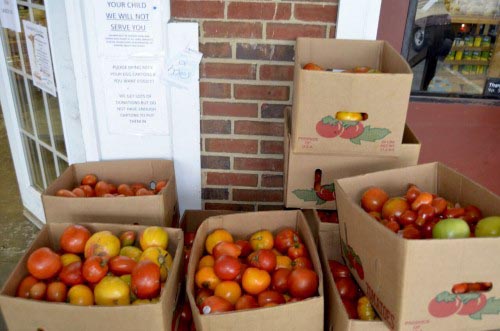
Fauquier Community Food Bank and Thrift is a non-profit integral to the working poor, seasonal workers, and underserved in the local community. The motto of Fauquier Community Food Bank is “Giving a Helping Hand.” Donations fuel the food pantry and the connected thrift store; volunteers organize and maintain inventory in both spaces and serve the community. Food Bank volunteers are comprised of members of local churches, nurses from the hospital, children in school who participate in canned food drives, and dedicated individuals in the community. The eldest regular volunteer is 90-years old and comes a few times a week.
For the volunteers, serving at the food bank gives them a sense of purpose. For the clients, food pantry donations nourish and feed their families. Above all, volunteers provide clients access to healthy, nutritious food in a hospitable and caring environment. We are proud to partner with Fauquier Community Food Bank and Thrift to provide fresh and organic produce to the community year-round.